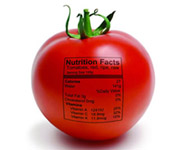Nutrition and Health Sciences, Department of

Department of Nutrition and Health Sciences: Faculty Publications
Document Type
Article
Date of this Version
7-31-2023
Citation
J Musculoskelet Neuronal Interact 2023; 23(3):299-307.
Abstract
Objectives: To examine the effects of joint angle (JA) on maximal voluntary isometric contractions (MVIC) and neuromuscular responses following a sustained, isometric forearm flexion task anchored to a rating of perceived exertion (RPE) of 8 (RPE=8). Methods: Nine women (age: 20.7±2.9 yrs; height: 168.8±7.2 cm; body mass: 66.3±6.8 kg) performed 2,3s forearm flexion MVICs at JAs of 75°, 100°, and 125° prior to and following a sustained, isometric forearm flexion task anchored to RPE=8 to task failure (torque reduced to zero) at JA100. Electromyographic (EMG) and mechanomyographic (MMG) signals were recorded from the biceps brachii. Results: The MVIC at JA100 (collapsed across Time) was significantly greater (pppp>0.05) differences between Time or JAs. Pre-test neuromuscular efficiency (normalized MVIC/normalized EMG AMP) was significantly greater (p=0.005) than post-test. Conclusion: Following a sustained, isometric forearm flexion task anchored to RPE=8 at JA100, the fatigue-induced MVIC and neuromuscular responses were not affected by JA.
Included in
Human and Clinical Nutrition Commons, Molecular, Genetic, and Biochemical Nutrition Commons, Other Nutrition Commons


Comments
Used by permission.